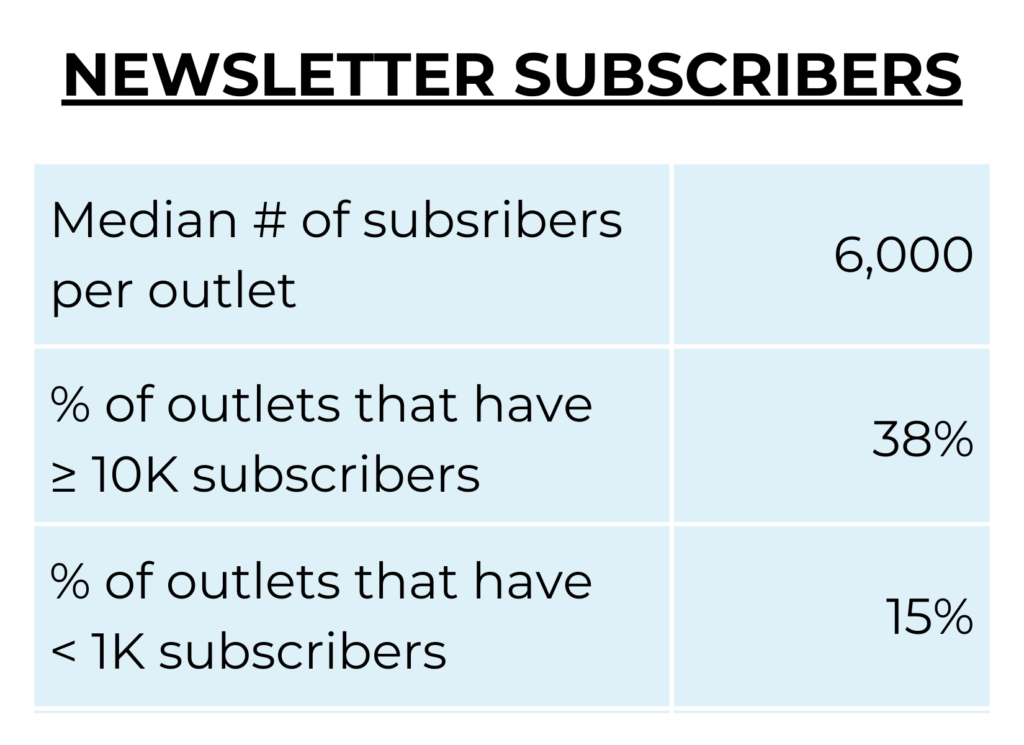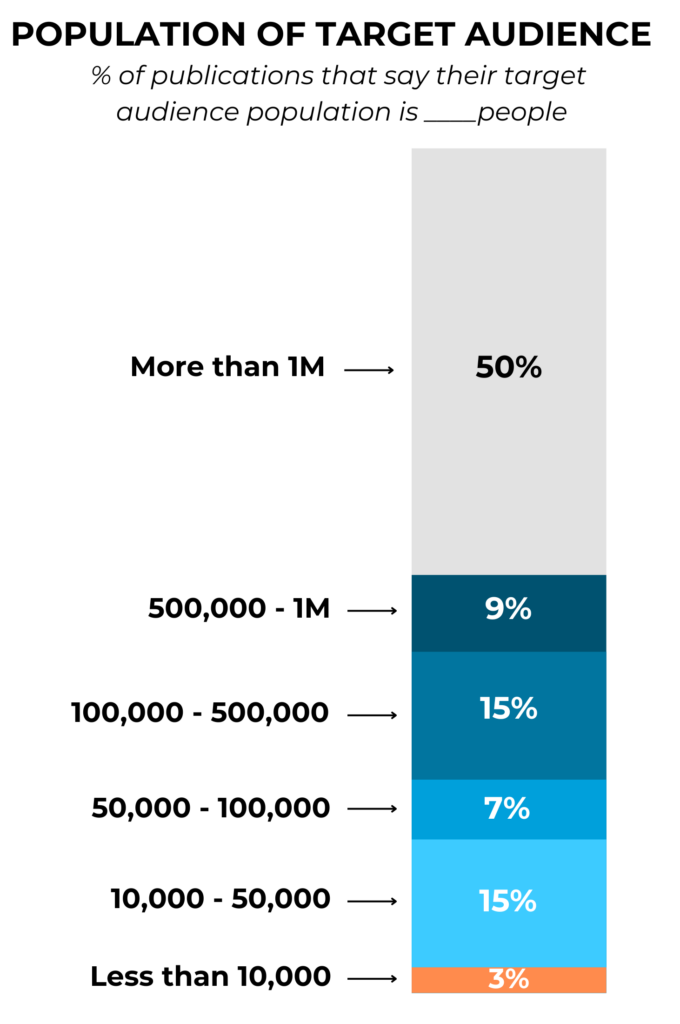
By Michele McLellan and Ha Ta
Aug. 8, 2023
Definition: State news outlets primarily focus on government policy, politics or topics of public interest such as health or the environment within a single state. Regional news outlets focus on a geographic area larger than a single state such as a cluster of several adjacent states or a region that encompasses parts of more than one state. There are 62 state and 24 regional organizations in this study, making up 20% and 8% of the nonprofit news field in terms of number of outlets, respectively.
State and regional outlets have grown steadily in number for more than a decade. Taken together, they now provide coverage of at least 48 states, the District of Columbia and Puerto Rico. They are spread evenly across four of the five major regions of the United States, but there are significantly fewer in the South.
Growth
State and regional news outlets began to fill significant gaps in news and information about politics and government policy in the wake of severe cutbacks by legacy news media more than a decade ago.
There were fewer than a dozen of these nonprofit organizations when the 2008 recession hit. Within the next two years, 19 state and regional outlets launched. State and regional outlets experienced another growth spurt starting in 2015, with a total of 45 startups over seven years. One state and one regional outlet launched in 2022.

Mission and impact
Nearly half of state and regional outlets primarily focus on in-depth, investigative reporting, with explanatory journalism emerging as another common and growing focus. In our 2022 survey, state and regional publishers cited revealing or preventing corruption or abuse of power, prompting governmental or institutional action, and building knowledge of a complicated issue as their top impact goals.
They tend to cover a limited number of topics, such as environment, education and health, often under an umbrella of public policy or a broader range of news topics.
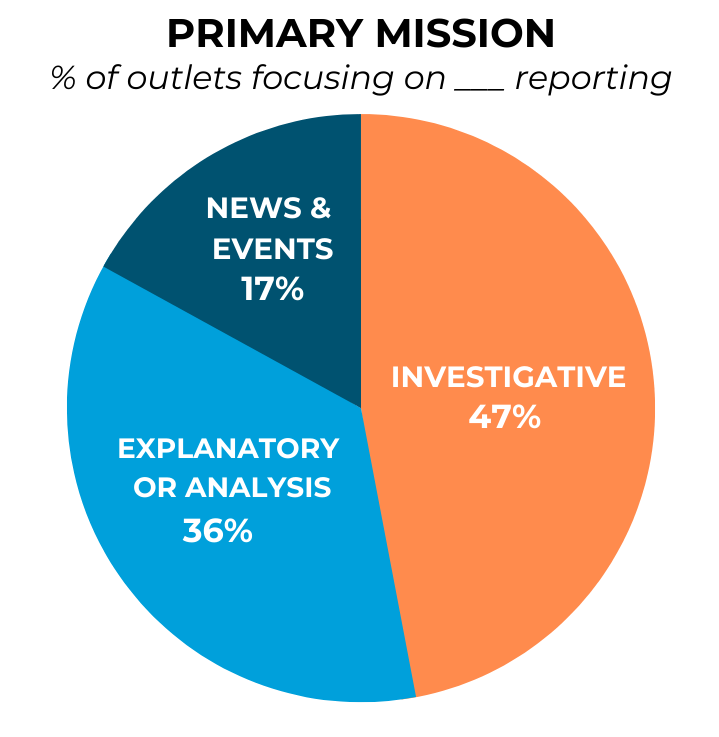
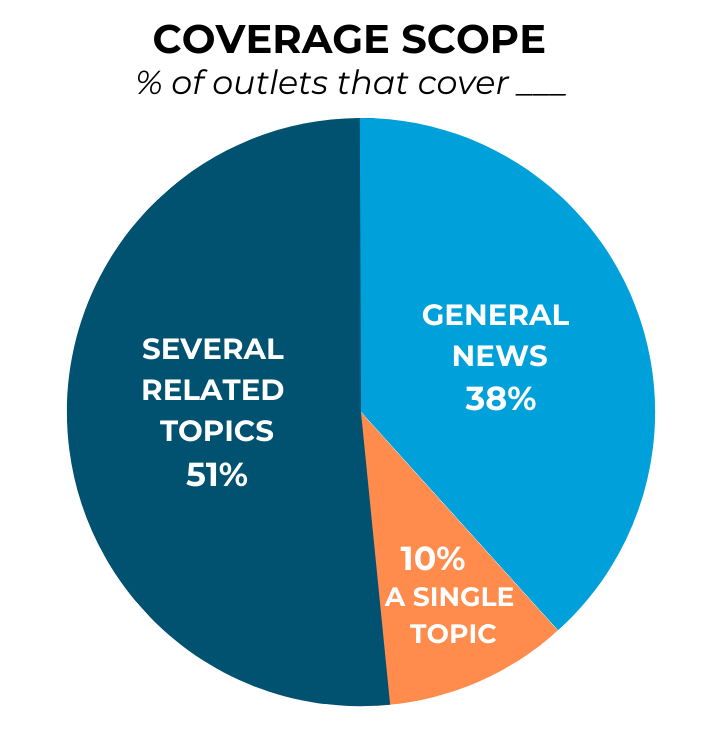
The top three topics for state/regional outlets in 2022 were environment & climate, government, and equity, inequality and justice.
This group is highly collaborative. Eight in 10 state and regional outlets participated in one or more editorial collaborations in 2022 and nearly half participated in four or more.

Change over time in the makeup of INN member outlets’ primary mission
State and regional outlets are more likely than the rest of the field to target rural audiences. More than one in three say they do so and these account for nearly half of the total of 69 nonprofits of any geographic scope that target rural communities.
Fewer than one in six say serving communities of color is their top priority, slightly lower than the field as a whole.
Median revenue per outlet was nearly $514,000, compared to $377,000 the year before. A major driver of gains: Foundations investing in larger, more established state and regional outlets. Our data don’t explain why foundation support to state and regional newsrooms is growing, but our reporting indicates a shift in philanthropic attention to state policy and statehouse coverage.
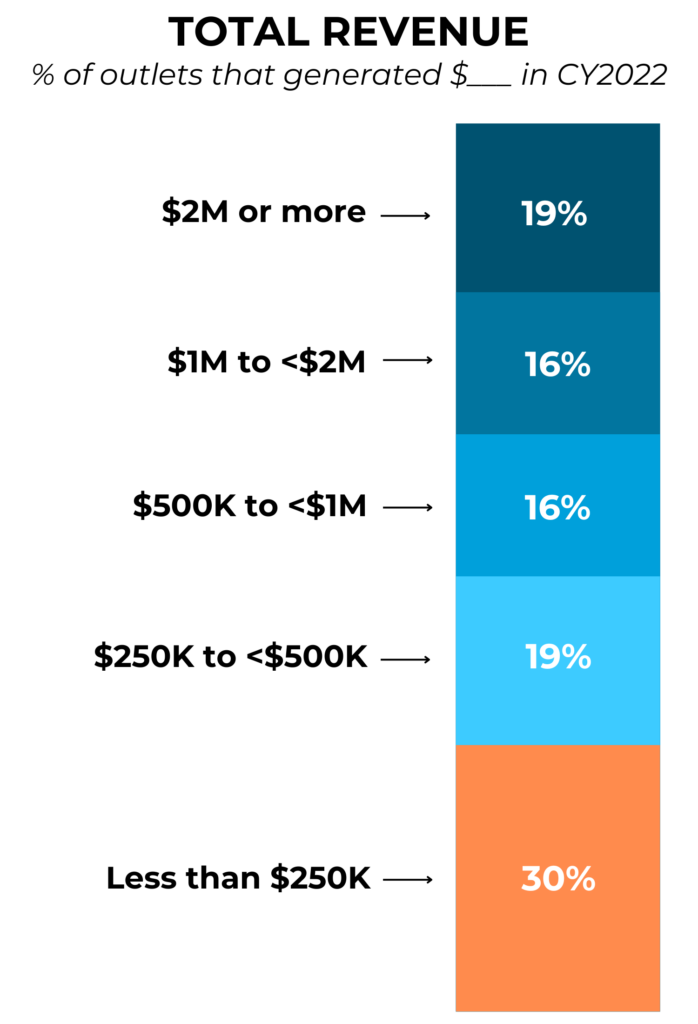
Total revenue
State and regional organizations tend to run lean operations. Nearly half operate on less than $500,000 in annual revenue, including three in 10 that take in less than $250,000.
Revenue mix
In the past, state and regional outlets derived a greater share of their revenue from individual giving than the rest of the field, which enabled them to be less reliant on foundation funding. However, that may be changing as foundation contributions grow. The share of donations was 33% of total revenue in 2022. Earned revenue, which declined during the Covid pandemic, appears to be rebounding slightly as a share of total revenue.
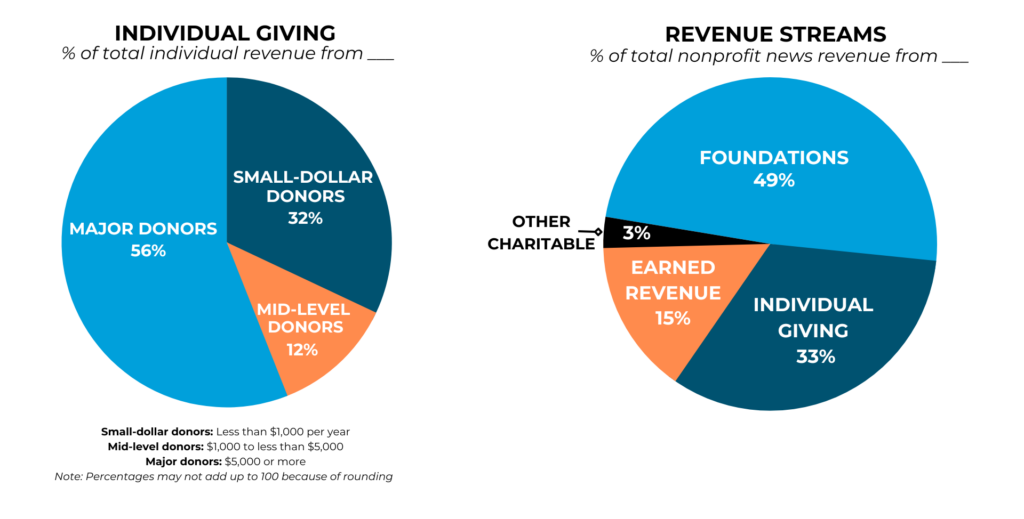
Revenue outlook
Many state outlets are well positioned to tap sponsorship revenue from institutional sources such as universities, hospitals and corporations that have an interest in the policy issues they cover. At the same time, state and regional outlets in less populous areas may face challenges in raising earned revenue from within their coverage area.
The median FTE per outlet in this group is 6 and the number of FTEs per organization ranges from 0 to 92. Seven in 10 (70.2%) FTE are devoted to editorial activities while the rest focus on revenue generation, technology and other non-editorial functions.
State and regional outlets as a group are less racially diverse at the leadership level than the rest of the field. People of color account for more than one in three (36%) of all personnel in this group but they number fewer than one in four (23%) among top executives. As in the rest of the field, diversity is not distributed evenly in this group. People of color make up 40% or more of total personnel at only one in three of these outlets and just over one in five has no person of color on staff.
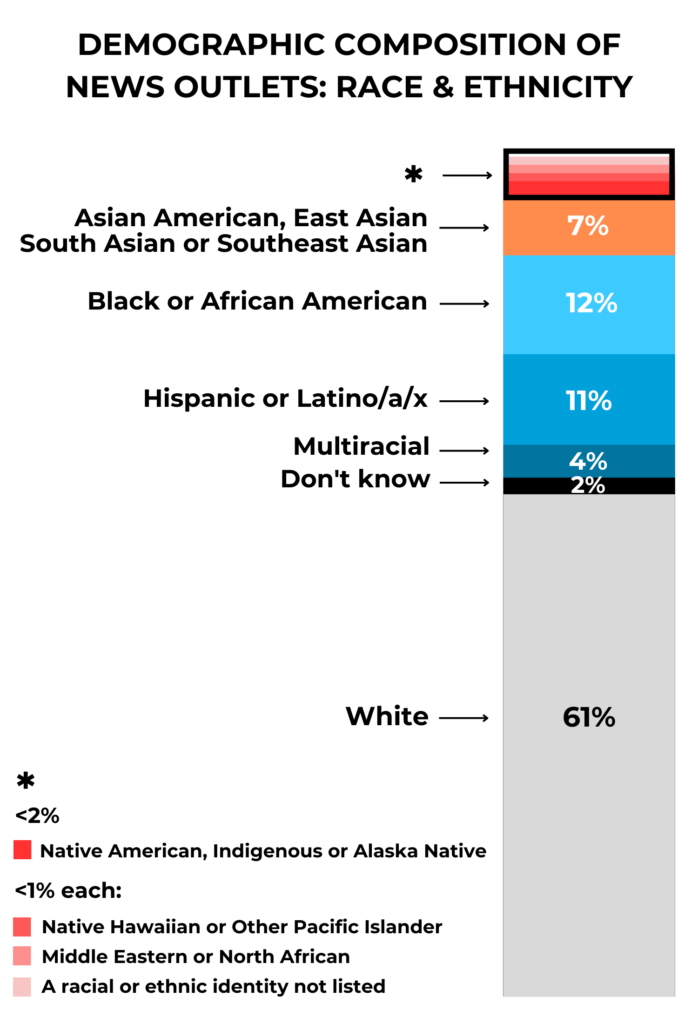
State and regional outlets take a mixed approach to reaching audiences. Having established their value and visibility by allowing their content to be published on third-party platforms, many now seek to expand the audience they reach directly via their own websites or newsletters.
More than half of these outlets say they primarily reach their audiences directly. But third-party distribution remains an important channel for this group.
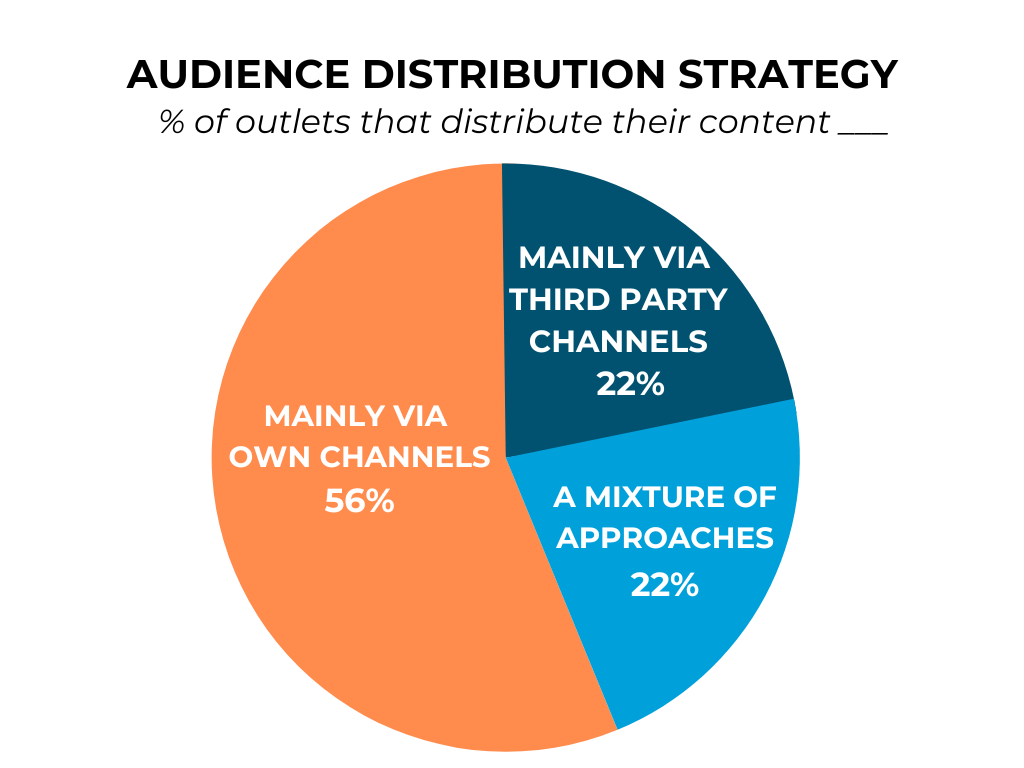
As a group, state and regional outlets estimate their work was carried regularly by nearly 3,400 third-party publications, of which 4 in 10 were newspapers. The median number of publication partners per outlet was 14, which is higher than local or national/global outlets.

